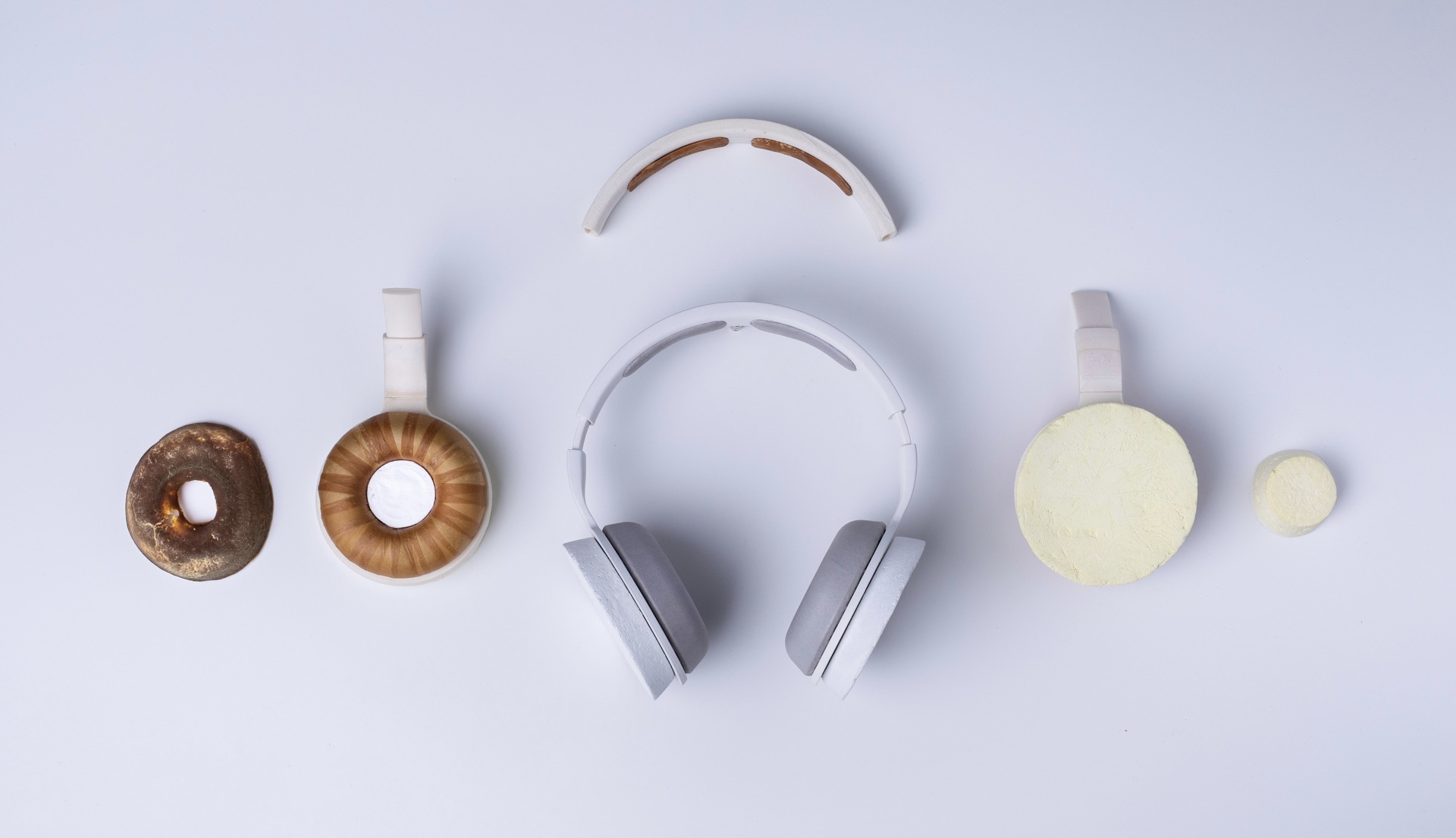Korvaa is an experimental science collaboration that explores the design and functionalities of novel, bio-based, microbially grown materials to showcase how these materials may be developed and implemented in the near future.
Originally kick-started by Nina Pulkkis, an educational documentary maker who was frustrated by the lack of products and concrete examples of synthetic biology in action; this collaborative project developed a unique headset made exclusively from microbially grown materials whilst also documenting the whole process.
The headset itself was created by Nordic design and innovation agency Aivan working alongside an array of synthetic biology scientists, industrial designers, artists and filmmakers, including Finish organisations Synbio Powerhouse, VTT Technical Research Centre and Aalto University in Finland.
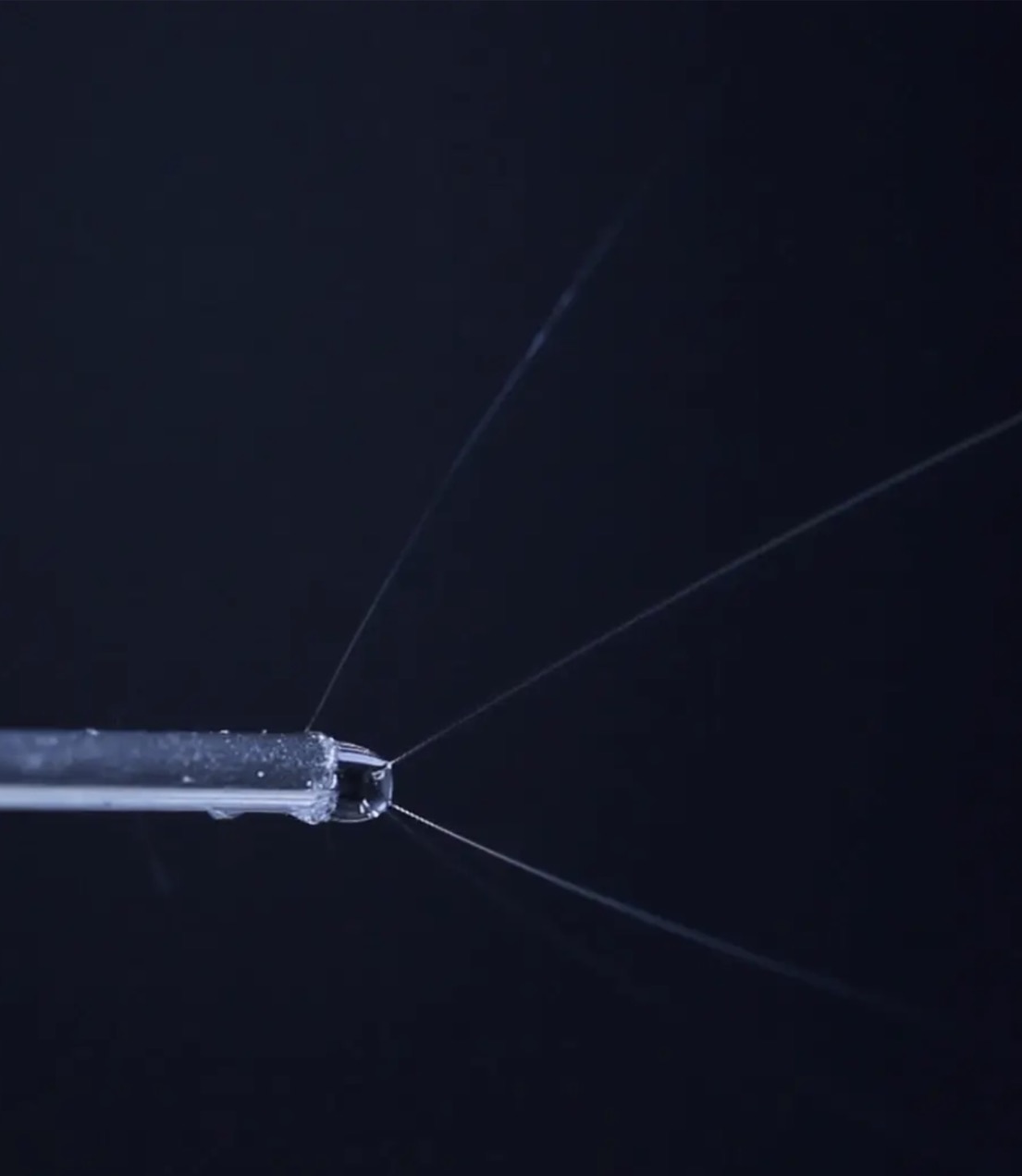
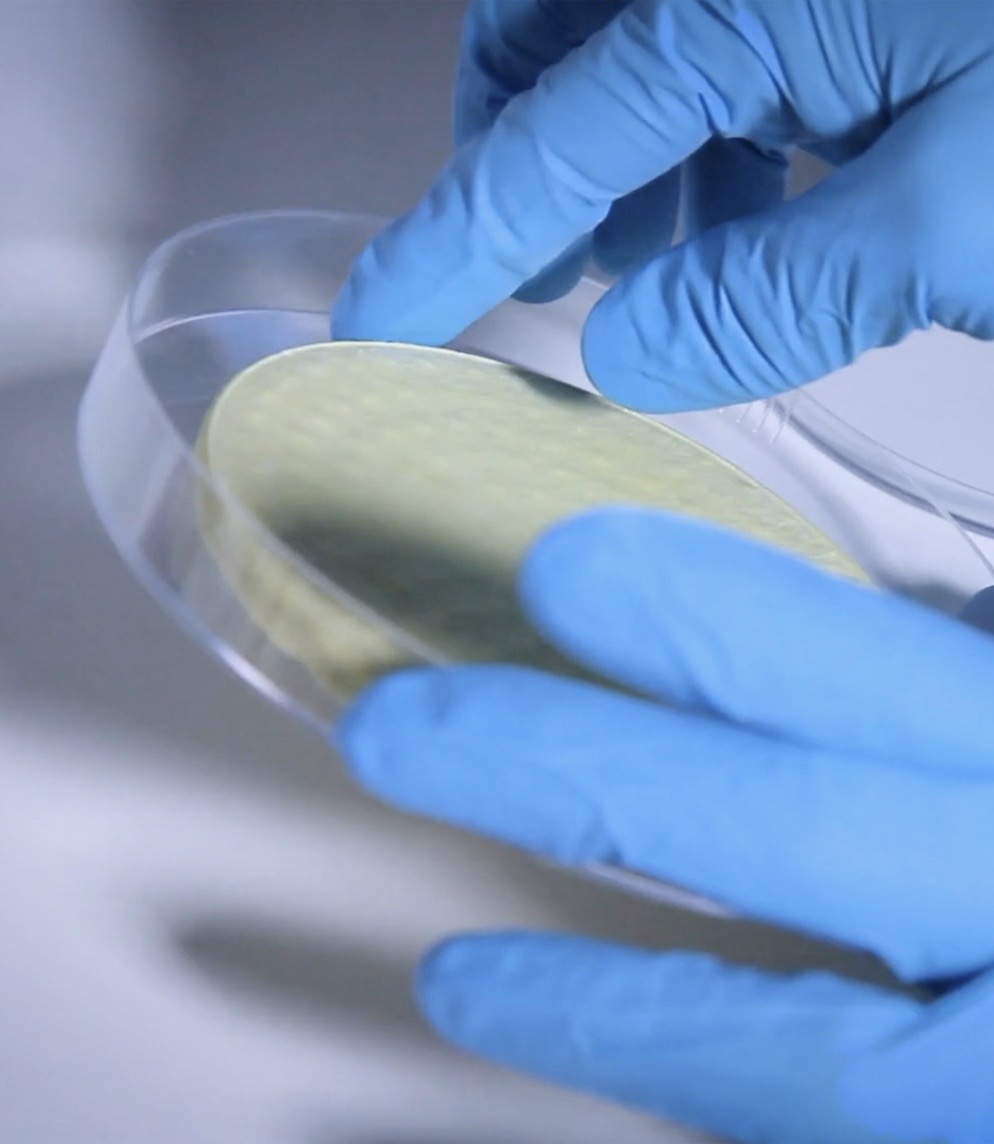
Using the disruptive, and rapidly developing concept of synthetic biology; a technology, seen by many as having a paramount role in our transition from a fossil-based economy to a more sustainable, and circular bio-economy. This project embraced the way that creation of new biological organisms can produce a variety of substances from renewable raw materials, waste fractions and CO₂.
The idea to create the Korvaa headset was made based on the number of different components required, with various hard foam-like, rigid, mesh and solid materials, all contained within this compact everyday piece of tech.
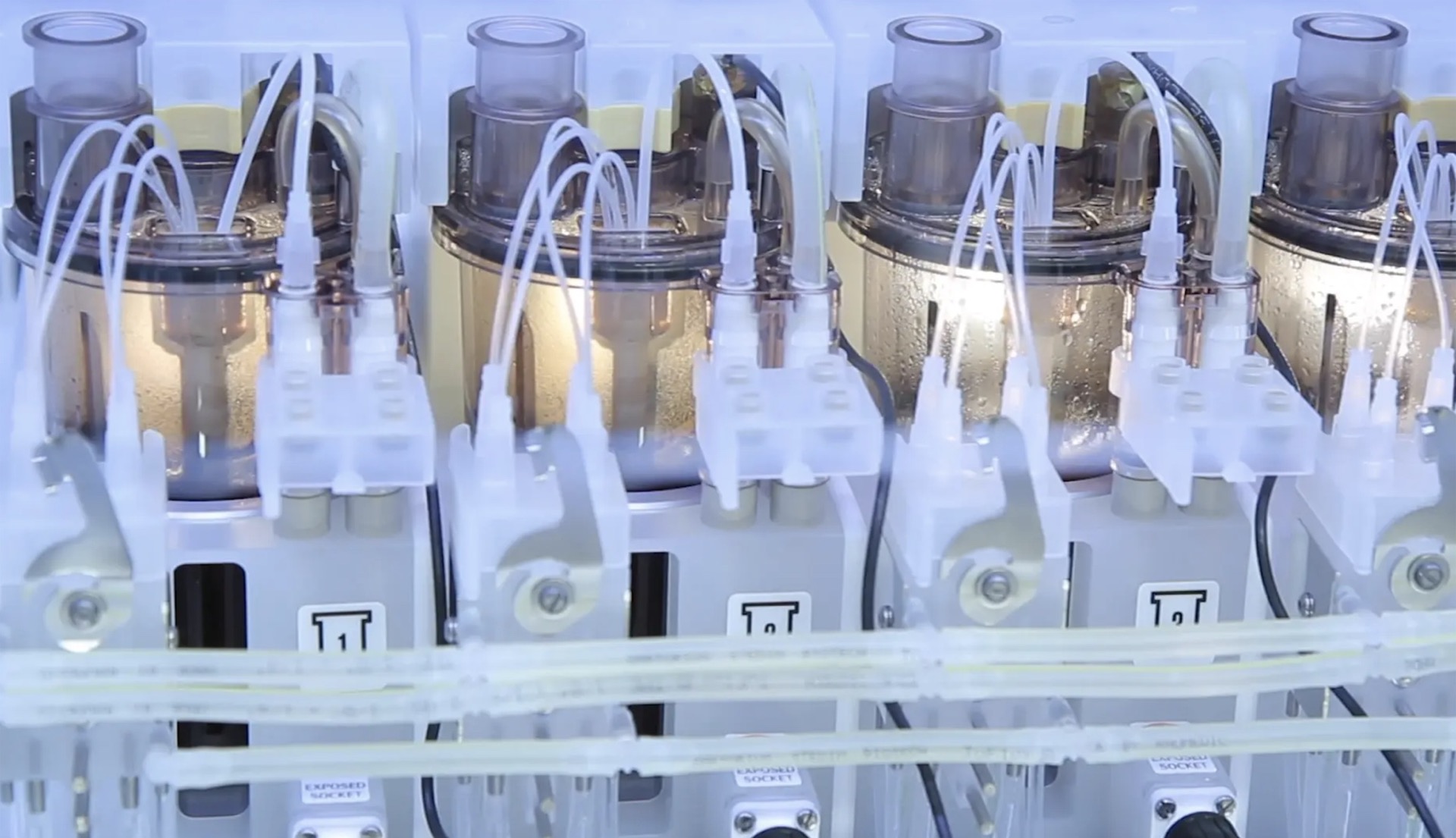
These standard headphone pieces were replaced with six forms of microbially grown materials, starting with the fabrication of the rigid frame, where Aivan 3-D printed a bioplastic using a biodegradable polylactic acid (PLA) polymer, grown from lactic acid and found in everyday baker’s yeast.
The earphone padding was developed using the fungus Trichoderma Reesei to create a foaming bubble-producing protein called Hydrophobin that they combined with cellulose to make the stable, yet soft structure needed.
The leather is made from the vegetative part of fungal mycelium, whilst the outer foam used the same fungus grown in a bioreactor and again mixed with cellulose; the final component was the inner mesh which was created using the ultra-fine and super-strong biosynthetic spider silk.
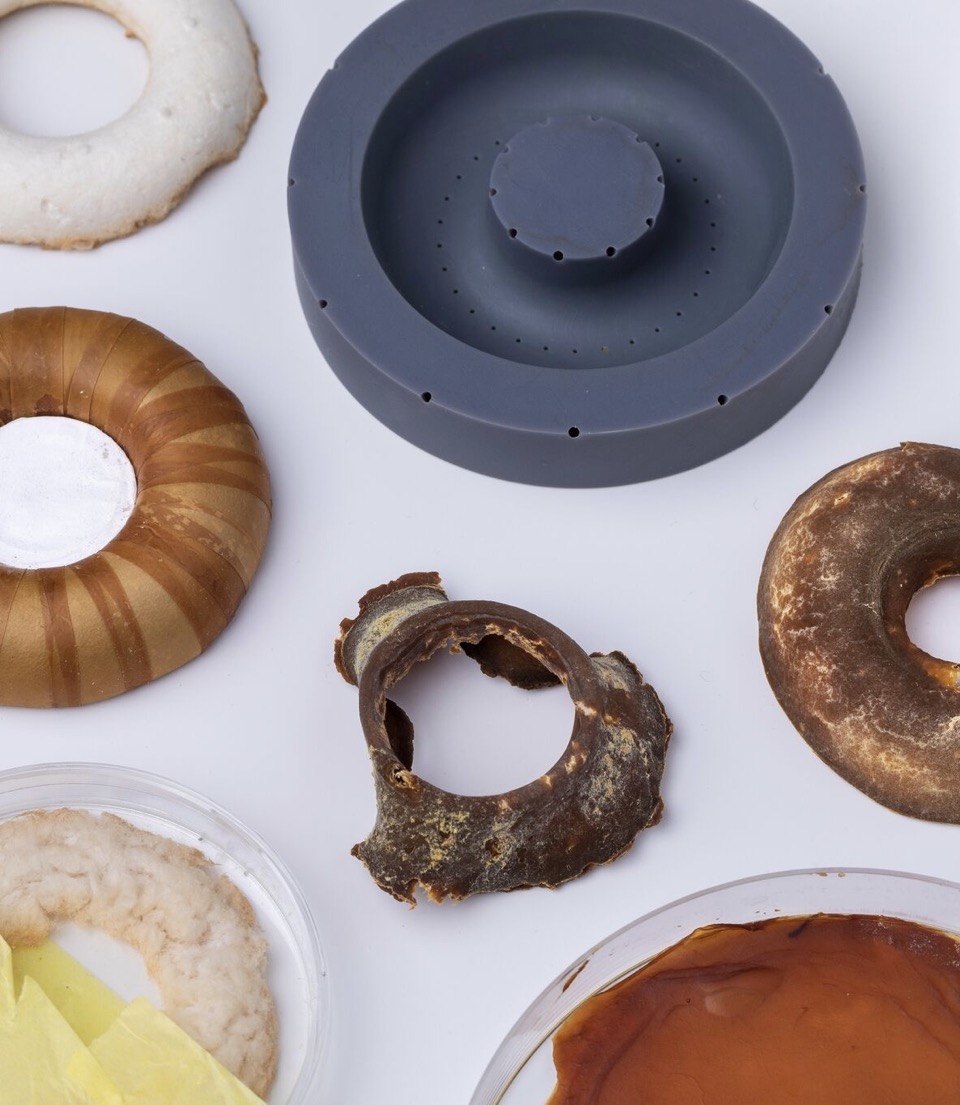
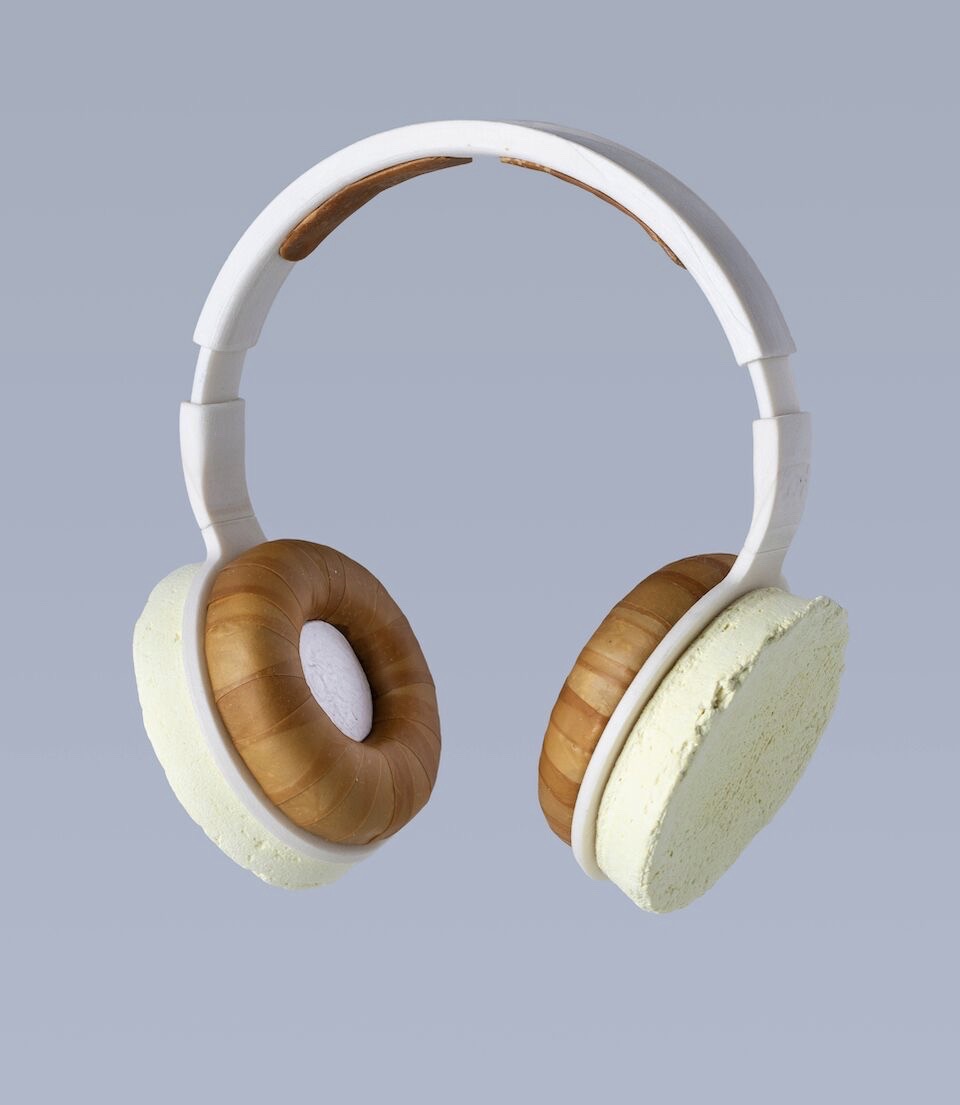
The product’s name originates from the Finnish language, where ‘Korva’ translates to mean the anatomical word for ‘ear’ and ‘Korvaa’ is a verb, meaning ‘to substitute, compensate or replace’.
An apt name, given this 6-month project was able to harness the power of synthetic biology to showcase a future where it can replace traditional and less sustainable materials.
